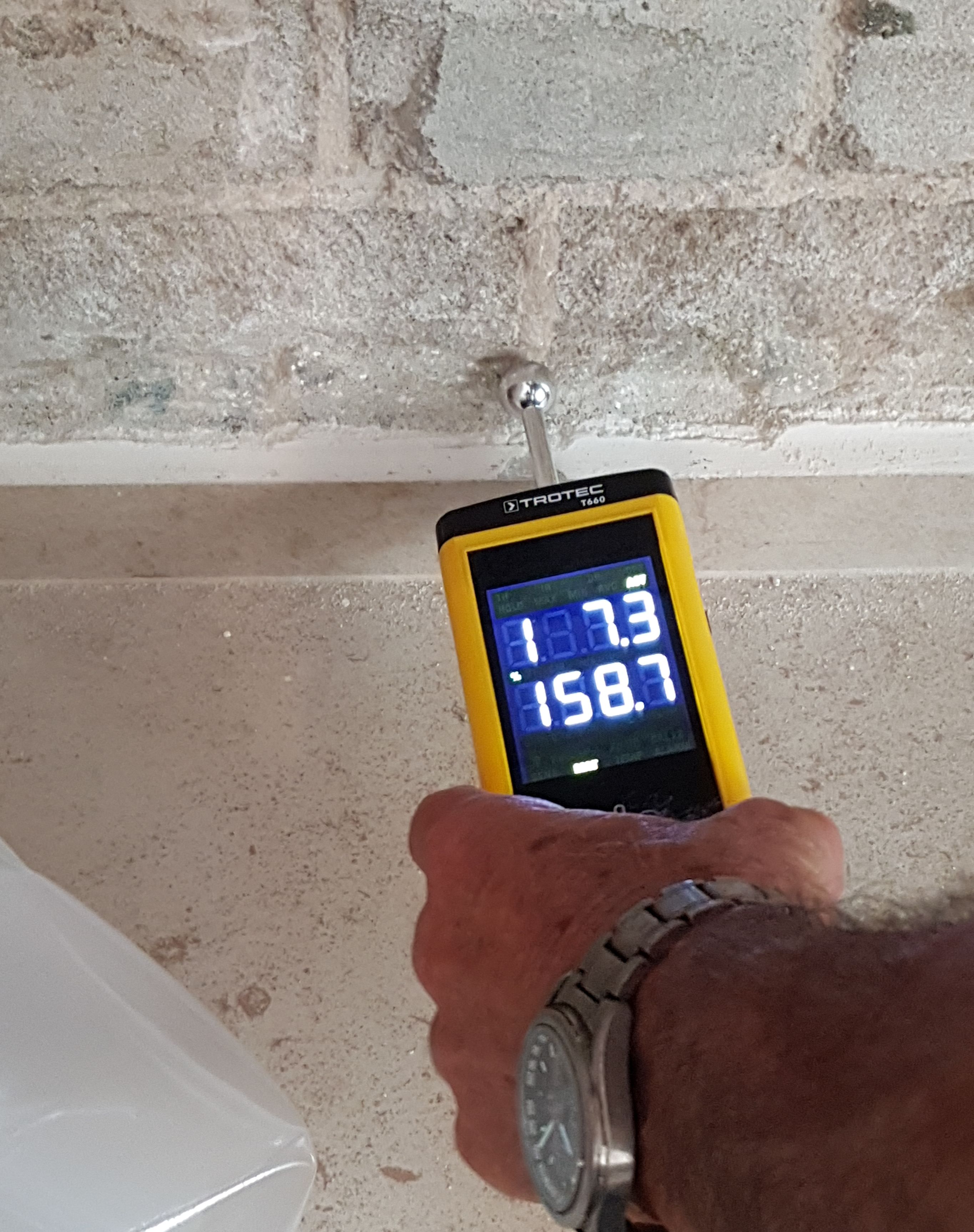Moisture Meter Purchasing Overview: What to Look for in High-Quality Instruments
Wiki Article
Look Into the World of Moisture Meters: Whatever You Required to Know
In the world of moisture meters lies a globe of accuracy and usefulness that commonly goes unnoticed. These gadgets, while seemingly simple, hold a riches of information that can dramatically affect various markets and applications. Understanding just how moisture meters operate, the different types readily available, and their varied usages can clarify their significance in making certain quality and efficiency. By discovering the details of dampness meters, one can reveal a valuable tool that goes beyond plain dimension, using understandings that can make a substantial difference in numerous areas.Exactly How Moisture Meters Work
Moisture meters operate by gauging the electric conductivity or capacitance of products to identify the dampness material present. These meters are important devices throughout different industries, consisting of woodworking, building and construction, and agriculture. By utilizing different approaches such as pinless or pin-type innovation, moisture meters give precise readings that assist specialists make informed choices.
Pin-type moisture meters function by putting the sharp pins into the material being checked. On the other hand, pinless wetness meters utilize electro-magnetic signals to check a bigger location without triggering any kind of damages to the product's surface area.
No matter of the approach made use of, moisture meters play an essential function in preventing problems such as mold and mildew growth, structural damages, or product issues triggered by excess dampness. Understanding how these meters work is essential for ensuring the top quality and stability of materials in various applications.
Kinds Of Moisture Meters
Provided the vital role moisture meters play in numerous markets, it is important to recognize the different types readily available to experts for properly assessing moisture levels - Moisture Meter. There are largely 2 major kinds of dampness meters: pinless and pin-type dampness meters

On the other hand, pinless wetness meters utilize electromagnetic sensing unit plates to check a larger area of the material without triggering any type of damages. This kind is suitable for swiftly scanning big areas and is generally used for flooring, walls, and ceilings. Pinless meters are convenient for taking analyses on finished surfaces without leaving any type of noticeable marks.
Both kinds of moisture meters have their benefits and are selected based on the details requirements of the job at hand. Comprehending the distinctions between these types is crucial for experts to make accurate dampness evaluations.
Applications Across Industries
Building specialists count on wetness meters to examine the wetness degrees in structure materials like wood, concrete, and drywall, which is essential for keeping structural integrity and stopping problems like rot or mold and mildew. The flooring industry makes use of wetness meters to measure the moisture content in subfloors prior to setting up different flooring coverings, stopping costly damages due to excess dampness. In the food industry, moisture meters are utilized to monitor and control moisture levels in products such as grains, nuts, and dried fruits to preserve freshness and quality.Tips for Utilizing Dampness Meters
Use the dampness meter's calibration settings to guarantee accurate readings when gauging the dampness content in different materials. Furthermore, make certain the meter is established to the correct wetness array for the product you are determining to acquire the most exact results.When utilizing a pin-type moisture meter, place the pins to the proper deepness advised for the product being checked. This ensures that the dampness analyses are drawn from the proper deepness within the product, offering a much more exact representation have a peek at these guys of its wetness content. For pinless moisture meters, remember to preserve correct contact with the material's surface area to get dependable readings.
Frequently examine and change the batteries in your moisture meter to stop inaccurate readings due to low power. Shop the meter in a secure and completely dry location when not being used to lengthen its life-span and keep its precision. By adhering to these tips, you can make best use of the performance of your dampness meter and acquire specific wetness web content measurements throughout different materials.
Maintenance and Calibration
To make certain the accuracy of moisture web content measurements, normal upkeep and calibration of the dampness meter are crucial actions in its proper performance. Calibration changes the moisture meter to make sure that it gives dependable and consistent results.Calibration needs to be carried out regularly, especially if the dampness meter is made use of frequently or in crucial applications where precise dimensions are called for. Several wetness meters feature calibration tools or can be calibrated by specialist solutions. Moisture Meter. It is advised to maintain a log of calibration dates and results to track the performance of the moisture meter in time. By maintaining and calibrating the wetness meter consistently, customers can trust the precision of the dampness material measurements gotten.
Final Thought

To conclude, wetness meters play a vital role in various industries by properly gauging the moisture content of materials. Understanding how these tools work, the various kinds offered, and appropriate upkeep and calibration are necessary for obtaining dependable results. Whether in manufacturing, building and construction, or agriculture, making use of wetness meters aids guarantee quality assurance and effectiveness in processes.

In verdict, wetness meters play an important duty in numerous sectors by accurately gauging the moisture content of products.
Report this wiki page